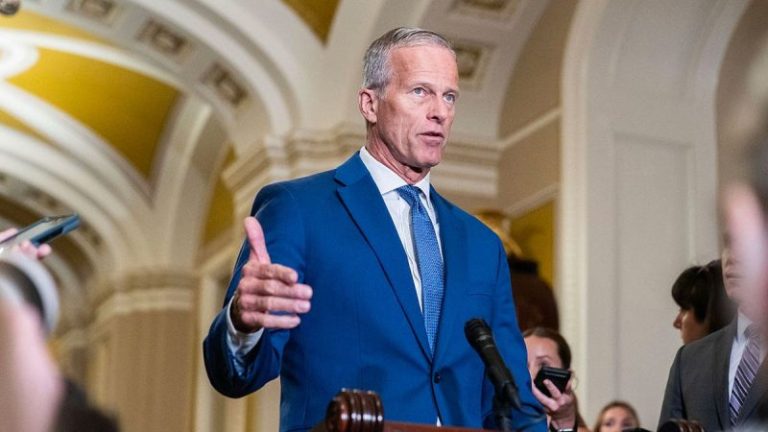/ NOT INTENDED FOR DISTRIBUTION TO UNITED STATES NEWS WIRE SERVICES OR FOR DISSEMINATION IN THE UNITED STATES /
Heritage Mining Ltd. (CSE: HML) (FRA: Y66 ) (‘ Heritage ‘ or the ‘ Company ‘) is pleased to announce an exploration update on Zone 3 Extension Mega-Quartz Vein System at its Flagship Drayton-Black Lake Project (‘DBL’). Which has confirmed broad gold zone within a newly discovered ~74m wide quartz vein system (true width unknown) associated with a magnetic anomaly that extends for ~4km along strike length and is up to 200m in width (Figure 2) at its flagship Drayton Black Lake Project September 9, 2025 press release.
DBL Exploration Program Highlights:
- Aggressive Soil/Till Orientation Survey (Figure 1) over Zone 3 Extension Area
- Follow-up Soil/Till Survey – success based on Orientation Survey (Figure 1) expected Q4 2025
- Outcrop/Vein stripping permit received above HML25-013 (Figure 2)
- Initiate a structural Study of the Mega-Quartz Vein System (Figure 2)
- Diamond Drilling Q4, 2025/Q1 2026 (Figure 3)
‘We are eager to further explore the newly discovered Zone 3 Extension Mega-Quartz Vein Structure systematically. Our team has developed a comprehensive approach to further exploring this area as well as broader exploration programs before winter. I would like to thank the exploration team for their strong efforts in the discovery of a such wide vein system.’ Commented Peter Schloo , President, CEO and Director of Heritage Mining Ltd.
Discussion of Exploration Program
Soil/Till Program
The purpose of the soil and till program is to Rapidly evaluation the newly identified Zone 3 Extension – Mega Quartz Vein Structure as well as a broader evaluation of Alcona , Zone 10, Zone 3, and New Millennium with a terrain-aware B-horizon program. Bias sampling toward stable, well-drained eluvial–illuvial positions where podzolic Bf/Bh horizons preserve pathfinder chemistry. Soil/till program will be solidified following an orientation survey of key areas. The outcome of this program is to identify Pathfinders for each target defined and identify near surface mineralization footprint across target areas.
Stripping and Structural Evaluation
The Company has received a stripping permit for the area above HML25-013 along the newly identified Zone 3 Extension – Mega Quartz Vein Structure. Stripping this area with follow on sampling and structural evaluations are planned for the Company’s 2025 Exploration program at DBL. The result of this program is to further evaluate the structural discovery at surface to better prioritize further targeting methods.
Scout Diamond Drilling
Additional scout diamond drilling is planned for the 2025 exploration program at the newly identified Zone 3 Extension – Mega Quartz Vein Structure. Following the completion of Soil/Till Program and Stripping and Structural Evaluation the Company intends to commence scout drilling with additional data. The Company may initiate the scout drilling program earlier depending on additional internal evaluation.
Conclusion
The discovery of a broad gold zone in the the newly identified Zone 3 Extension – Mega Quartz Vein Structure warrants additional systemic exploration to further develop our discovery model.
Qualified Person
Stephen Hughes P. Geo , Strategic Advisor for the Company, serves as a qualified person as defined by National Instrument 43-101 – Standards of Disclosure for Mineral Projects and has reviewed the scientific and technical information in this news release, approving the disclosure herein.
Technical Program
Heritage Mining adheres to a strict QA/QC protocol for handling, sampling, sample transportation and analyses. Chain-of-custody protocols are designed to ensure security of samples until their delivery at the laboratory.
Sampling, Sub-sampling, and Laboratory Analysis for Heritage Mining Drayton Black Lake Project All drilling at the Drayton Black Lake project recovers NQ core. Drill core is systematically split in half using a diamond saw. A qualified geologist examines the drill core, marking intervals for sampling and indicating the cutting line. Sample lengths are typically 1.0 metre, adjusted to a minimum length of 0.5 metre as necessary to respect lithological and/or mineralogical contacts and to isolate narrow veins or structures that may contain higher-grade mineralization.
Technicians saw the core along the cutting lines determined by the geologist. One half of the core is retained as a witness sample, while the other half is submitted for analysis. Individual sample bags are securely sealed and placed into sealed bags, which are then clearly marked with their contents.
Heritage Mining submits samples for gold determination by PhotonAssay to ALS Canada Ltd. (‘ ALS ‘). ALS operates under a commercial contract with Heritage Mining.
Drill core samples are shipped to ALS for sample preparation at their facilities in Thunderbay Ontario. ALS is an ISO/IEC 17025:2017 accredited laboratory for the PhotonAssay method in addition to a variety of diverse metal determination methods.
Analytical Procedures
The ALS procedure for PhotonAssay involves lab applying preparation codes LOG-21 (sample logging via barcode), CRU-31 (fine crushing so that 70% passes through a 2mm screen) and SPL-32a (rotary splitting of a representative ~500g subsample) followed by analytical code Au-PA01 which is a non-destructive gold analysis method using high-energy X-rays with a gold detection range from 0.03 ppm to 350ppm.
After gold assays are returned, Heritage then may choose to perform multi-element assays on selected samples based on the gold results. In these cases, sample preparation codes FND-05 (locate and use remaining crushed material from Au-PA01) and PUL-32m (pulverization so that >85% passes 75 µm screen) are then applied followed by analytical code ME-MS61 (multi-element ICP-MS analysis for base metals, pathfinder elements, lithophile elements and rare earth elements).
________________________________________
Quality Assurance/Quality Control (QA/QC)
The drill program design, QA/QC, and interpretation of results are performed by qualified persons employing a rigorous QA/QC program consistent with industry best practices. Standards and blanks account for a minimum of 10% of the samples, in addition to the laboratories’ internal quality assurance programs.
Quality Control data are meticulously evaluated upon receipt from the laboratories for any failures. Appropriate corrective action is taken if assay results for standards and blanks fall outside allowed tolerances. All results disclosed by Heritage Mining have successfully passed the Company’s stringent quality control protocols.
The Company does not recognize any factors of drilling, sampling, or recovery that could materially affect the accuracy or reliability of the assay data disclosed. The assay data disclosed in this press release have been verified by the Company’s Qualified Person against the original assay certificates.
Heritage Mining notes that it has not completed any economic evaluations of its Drayton-Black Lake Project, and the project does not currently have any resources or reserves.
ABOUT HERITAGE MINING LTD.
The Company is a Canadian mineral exploration company advancing its two high grade gold-silver-copper projects in Northwestern Ontario . The Drayton – Black Lake and the Contact Bay projects are located near Sioux Lookout in the underexplored Eagle-Wabigoon-Manitou Greenstone Belt. Both projects benefit from a wealth of historic data, excellent site access and logistical support from the local community.
FORWARD-LOOKING STATEMENTS
This news release contains certain statements that constitute forward looking information within the meaning of applicable securities laws. These statements relate to future events of the Company. Any statements that express or involve discussions with respect to predictions, expectations, beliefs, plans, projections, objectives, assumptions or future events or performance (often, but not always, using words or phrases such as ‘seek’, ‘anticipate’, ‘plan’, ‘continue’, ‘estimate’, ‘expect’, ‘forecast’, ‘may’, ‘will’, ‘project’, ‘predict’, ‘potential’, ‘targeting’, ‘intend’, ‘could’, ‘might’, ‘should’, ‘believe’, ‘outlook’ and similar expressions are not statements of historical fact and may be forward looking information. All statements, other than statements of historical fact, included herein are forward-looking statements.
Forward looking information involves known and unknown risks, uncertainties and other factors which may cause the actual results, performance, or achievements of the Company to be materially different from any future results, performance or achievements expressed or implied by the forward-looking information. Such risks include, among others, the inherent risk of the mining industry; adverse economic and market developments; the risk that the Company will not be successful in completing additional acquisitions; risks relating to the estimation of mineral resources; the possibility that the Company’s estimated burn rate may be higher than anticipated; risks of unexpected cost increases; risks of labour shortages; risks relating to exploration and development activities; risks relating to future prices of mineral resources; risks related to work site accidents, risks related to geological uncertainties and variations; risks related to government and community support of the Company’s projects; risks related to global pandemics and other risks related to the mining industry. The Company believes that the expectations reflected in such forward-looking information are reasonable, but no assurance can be given that these expectations will prove to be correct and such forward‐looking information should not be unduly relied upon. These statements speak only as of the date of this news release. The Company does not intend, and does not assume any obligation, to update any forward‐looking information except as required by law.
This document does not constitute an offer to sell, or a solicitation of an offer to buy, securities of the Company in Canada , the United States , or any other jurisdiction. Any such offer to sell or solicitation of an offer to buy the securities described herein will be made only pursuant to subscription documentation between the Company and prospective purchasers. Any such offering will be made in reliance upon exemptions from the prospectus and registration requirements under applicable securities laws, pursuant to a subscription agreement to be entered into by the Company and prospective investors.
SOURCE Heritage Mining Ltd.
View original content to download multimedia: http://www.newswire.ca/en/releases/archive/September2025/11/c1327.html










